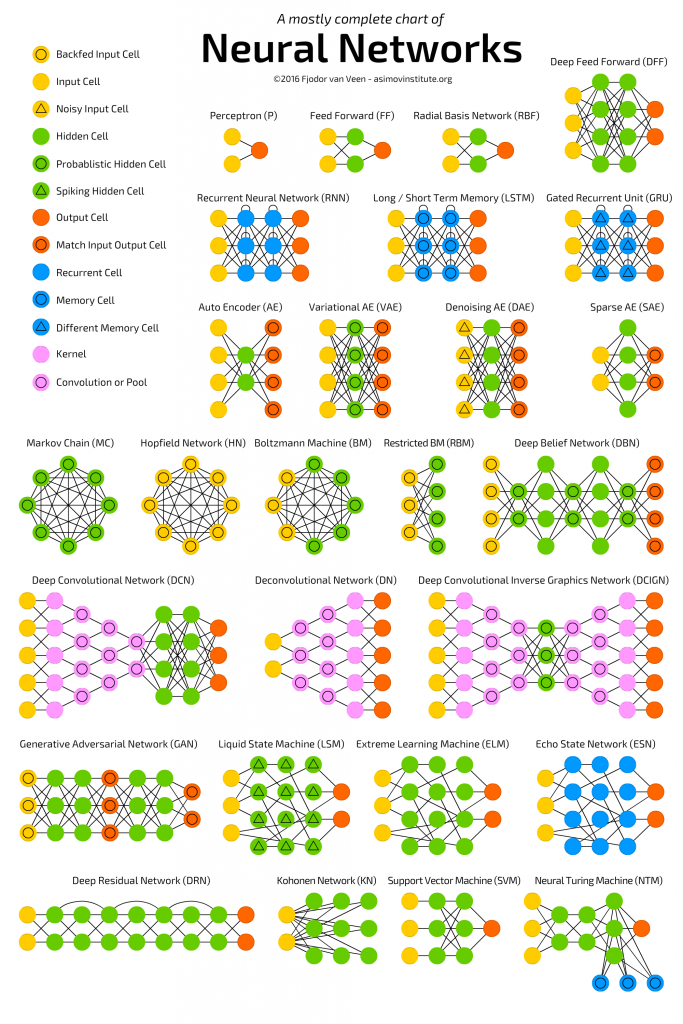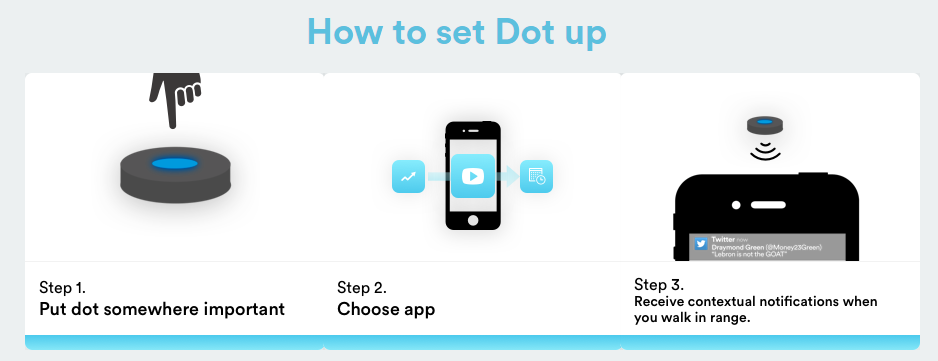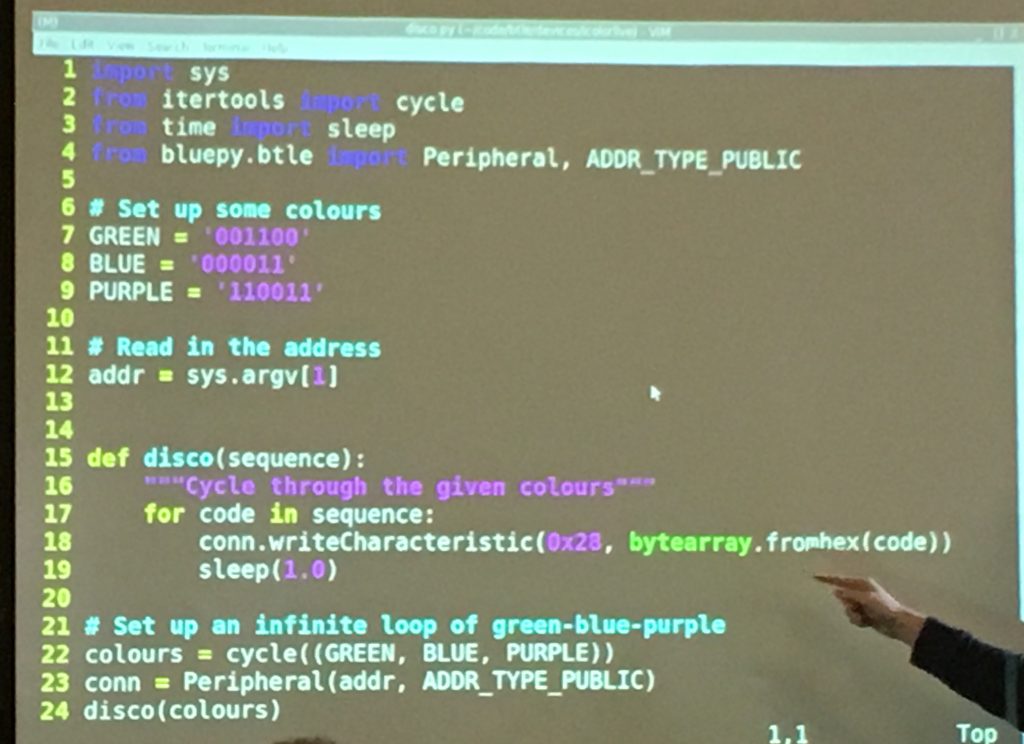Sections
Innocence and Experience II
[avatar user=”malm” size=”small” align=”left” link=”file” /]
Last week’s post on innocence and experience generated some interest. One of the central themes, namely that experience and mistakes can show you things which are not accessible to the inexperienced, is superbly showcased in the first of a series of posts by Simon Wardley simply entitled “On Being Lost“. It will eventually form Chapter 1 of a book on Wardley Mapping and explores the multi-year journey by which he built a collection of tools by which to approach the problem of strategy in the context of a competitive landscape with evolving threats:
Our strategy was a tyranny of action statements without any inkling about position and movement but instead built upon gut feel and “core”. If there was a way to get things more wrong, I haven’t found it since and I was the CEO. However, we were doing well and the one thing I had in my favour was that I understood how little I knew about strategy. … I set out to fix this and the first thing I needed was a map.
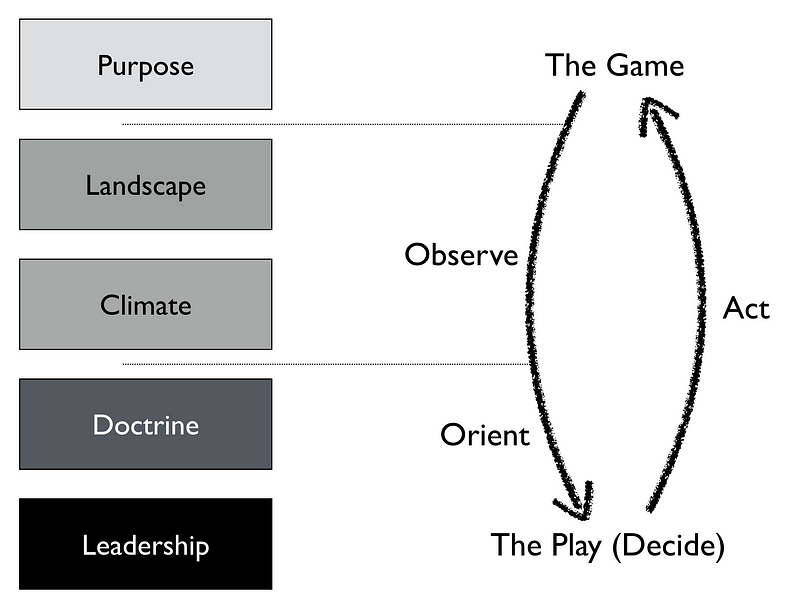
Wardley is a personal favourite of mine and a familiar source of links for the blog. His focus is on an unclear future which unfailingly proves to work out very differently from how it is envisaged from the past.
30 years ago, an outfit called Phuture were attempting to anticipate things to come with what ended up as the Acid House movement. One of the trio, DJ Spank Spank, passed away this week, the latest luminary in 2016’s unfinished miasma of musical death. Phuture’s Acid Tracks remains a potent memory of futures past and a map of some last century liminal cultural territory:
Artificial Intelligence
This handy Medium post outlines how to get “up to speed on Deep Learning” starting from basics up to building something yourself. It contains a link to this Andrew Ng video on the role and importance of self-taught learning:
The Asimov Institute have attempted to capture the rich diversity of neural network Deep Learning topologies. If nothing else their resource provides a striking visual overview of the field of play:
Udacity founder Sebastian Thrun is unsurprisingly talking up the prospects for nanodegrees providing the self-directed training needed to support the scale of demand for self-driving engineers. In this one specific case there definitely appears to be a pipeline problem with good engineers effectively worth up to $10million a head:
“There’s a huge hype around autonomous driving. There are many competitors in the field, but the number of people you can hire right out of university who are being educated in the field are limited. You’re looking for experts in computer vision, robotics, intelligent systems, artificial intelligence and so on.”
Further evidence that the next wave of deep learning applications will focus heavily on health.
Privacy, Security and Cloud
Google’s AI chat messaging and smart assistant proposition Allo finally launched this week. It has integrated support for smart replies and image recognition as well as 1-1 and group conversations on top of search and is essentially where Google Now goes next:
“Google Assistant is the next evolution of the search company’s efforts with Android’s Now on Tap, natural language search and voice assistant features. The company says it will learn from your day-to-day activities and improve its suggestions, in the same way Google Now currently does within the Google search app on the iPhone and built-in to Android.”
BGR outlined some of the cool things you can do with Allo but none of them impressed Edward Snowden who suggested “nobody should use the app” on account of the threat it represents to individual privacy and safety:
“We have to decide whether we want to give our data to Google and companies like it – whether the fun of smart suggestions and all the world’s knowledge is worth everyone eventually knowing a lot more about us, too.”
FBI director James Comey on why everyone should cover up their webcams right now:
“You go into any government office and we all have the little camera things that sit on top of the screen. They all have a little lid that closes down on them. You do that so that people who don’t have authority don’t look at you. I think that’s a good thing.”
Relatedly, the Intercept explain how it is possible to spy on phones using a sophisticated fake base station tool called the Stingray:
the “Stingray II” device can impersonate four cellular communications towers at once, monitoring up to four cellular provider networks simultaneously, and with an add-on can operate on so-called 2G, 3G, and 4G networks simultaneously.

A USB stick that destroys everything it’s plugged into.
McKinsey highlight how cloud is forcing the rapid consumerisation of IT. Even verticals such as banking, where the regulatory environment requires the use of a hybrid approach, are facing evolutionary pressure to at least adopt cloud methods, tools and mindset. The rationale is clear:
Having a data center cloud with software that matches a public cloud would make it easier for apps to move between the two without requiring changes to code.
Mobile and the Internet of Things
Ten things about Android v7, or Nougat, from Forbes. Here’s the tl;dr:
Split-screen mode, quick reply to notifications, and revamped settings and toggle menus all make your phone easier and more friendly to use.
DotEverything is a “physical push notification” proposition built on Bluetooth. Let’s hope it proves more successful than NFC tags which were much hyped but don’t appear to have gained much traction.
Software
Andrew Qu’s excellent technical blog contains a good post explaining how channels and multi-threading work in Go:
package main
import (
"fmt"
"time"
)
func print_letters(s string, ch_num_letters (chan int)) int {
for i := 0; i < len(s); i++ {
fmt.Printf("%c\n", s[i]);
time.Sleep(time.Millisecond * 500)
}
if ch_n_letters != nil {
// Send number of letters to the channel if given
ch_num_letters <- len(s)
}
return len(s)
}
func main() {
ch_n_letters := make(chan int)
// Print 123456 in a separate thread:
go print_letters("123456", ch_n_letters)
// Print 67890 in the main thread:
len2 := print_letters("67890", nil)
n_letters := <- ch_n_letters
fmt.Println("N of letters: ", n_letters, "and", len2)
}
How to explain agile to a child using room tidying as the context.
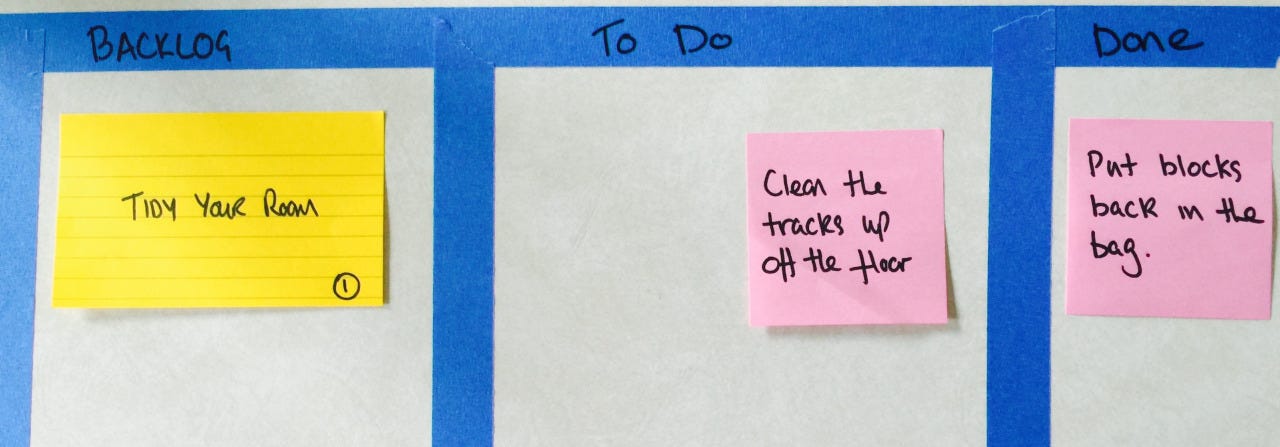
The Python UK conference took place last weekend in Cardiff. As ever it was a huge amount of fun and a great environment in which to learn new things. This year personal highlights included the focus on the BBC Micro:bit and an outstanding talk from Helen Sherwood-Taylor on how to control a Bluetooth Low Energy (BTLE) LED light from Python using bluepy armed with little other than a Raspberry Pi 3 and a basic knowledge of the BTLE GATT profile. Here’s her code to toggle an iColorLive smart bulb disco-style through green, blue and purple a second at a time:
The bulb is available on Amazon Prime for under £15:

Science
Are you living in an alternate reality in which you’re convinced that certain things happened that didn’t? Welcome to the wacky world of the “Mandela Effect”.
Great summary from Quartz of cognitive biases of the sort memorably explored in “Thinking, Fast and Slow” proposes this top level summary:
- Information overload sucks, so we aggressively filter.
- Lack of meaning is confusing, so we fill in the gaps.
- We need to act fast lest we lose our chance, so we jump to conclusion.
- This isn’t getting easier, so we try to remember the important bits.

Class Central on why MOOC provider Coursera is doing TV ads.
Work Culture
If you want to be fabulously wealthy, you should aim to do either an MBA or an Engineering degree. Or even both.
Last week’s post highlighted the role of unconscious bias in the hiring process and the deleterious effect it has on female applicants. This week a follow up article provides greater context and emphasises the overwhelming influence of unconscious bias in our culture and why it is critical to take steps to guard against it particularly in relation to hiring female tech staff. The post is essential reading for anyone involved in tech hiring:
Acknowledging that you have biases that conflict with your values does not make you a bad person. It’s a natural result of our culture. The important thing is to find ways to eliminate them. Blindly believing your company is a meritocracy not only does not make it so, but will actually make it even harder to address implicit bias.
How Warby Parker gets better results by reducing the control exerted over development tasks:
The company invented a process that invites all of its 800 workers to help manage the business. The new system, called Warbles, lets employees across Warby Parker nominate programming projects. Managers vote on them by assigning points to the tasks they think would add the most value. The programmers then get to pick the projects they’re most interested in, but they’re rewarded if they pick the ones with the most points. Teams of computer engineers compete to accumulate the most points, and after every quarter, the winning team gets a prize.
Tencent’s work culture on the other hand sounds brutally competitive and serves to vividly illustrate the importance of doing your homework on a potential employer before you apply for that dream job. It’s not always so obvious to correlate this sort of information with external signs of success either:
“Tencent’s culture is like a shark womb,” said Andy Mok, managing director for recruiter Red Pagoda Resources in Beijing, referring to how some unborn sharks cannibalize siblings in the womb to ensure their own survival. “It’s not as deadly, but it makes every member adapt faster and be more competitive,” he said.

Either way, whatever the culture, the actual workspace is likely to be similar:
Now we’re increasingly converging in a new, pervasive, always-open workspace. Who else we insist on including and what we choose to do with this new proximity is up to us.
Startups and Shutdowns
The BBC showcased the tech startup landscape in the UK publishing this geographical talent map:
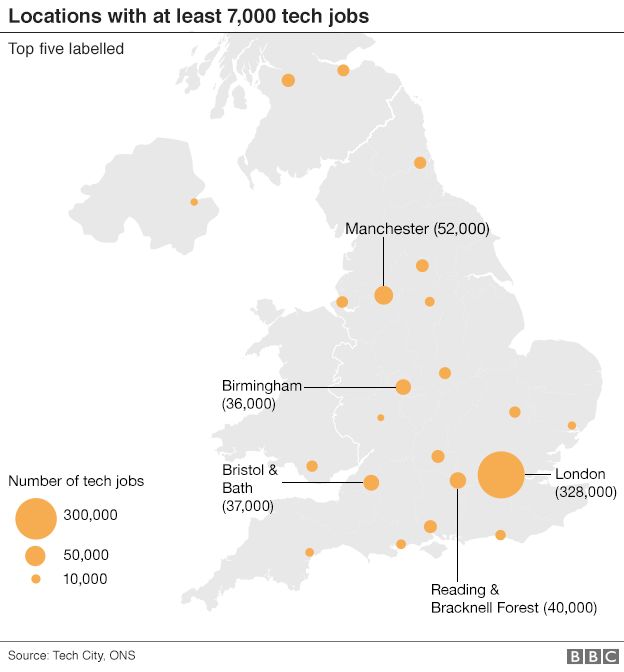
They also asked the question why the UK despite a surfeit of digital talent had not produced a company of the scale or importance of a Google or Facebook. Angel and seed funding is well supported in the UK but second stage or scale funding appears to be more of a problem:
“We have been appallingly bad at giving those minnows the long-term capital they need,”
Microsoft are shutting down Skype engineering in the UK. Most of those affected likely won’t have too much trouble getting offers from competitors or in other verticals that are desperate for digital skillsets.
FirstRound on how to lead and rally a company through a layoff.
